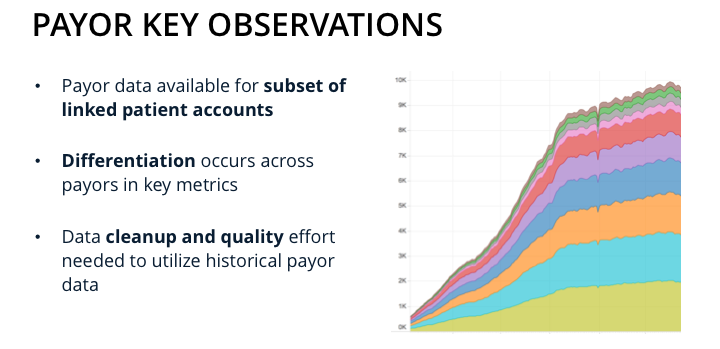Previous Article
Wearable Medical Device — Agile Data Science

Summary
A leading medical device company wanted to build an open data ecosystem unlocking the combined value of patient, ERP, CRM, and manufacturing data.
Silicon Valley Data Science jump-started the company’s data usage by connecting internal operations data to actual patient outcomes.
Background and Business Problem
SVDS was engaged by a medical device company that provides a chronic disease monitoring solution. The client previously asked us to define the architectural foundation for their new focus on data; they now wanted to accelerate the extraction of key business learnings from the data.
Our client sought to unlock the data locked in various silos, including devices, ERP, SFA, complaint management, and manufacturing. A series of investigative charters were identified in order to better understand the following:
- how patients acquire and use the client’s device
- the overall health of the patient base
- patient segmentation based on emergent physical and commercial characteristics
The client also wished to better understand current data availability while exploring and prototyping demonstrative data products. In order to do this, they needed to validate key assumptions about important data sets and begin extracting key business value from key data sets. In addition, the data sets needed to be validated for their ability to assess viability and readiness to support more complex discovery.
To focus the exploration and and define success, our client needed new technology, metrics, and analytical capabilities to monitor patient and population level data, yielding new insights into the monitoring solution’s effectiveness.
Solution
SVDS began by building an initial data platform and performing exploratory data analysis. This was the first time the client leveraged population-wide user-level data to generate holistic insights across their patient base. Historically, this data had been used to serve only individual patient needs and FDA regulated interactions. The liberation of this data and the ability to integrate patient device data with other useful sources such as sales data and CRM enabled the company to better understand their users and consumption patterns based on detailed population segmentation. Additionally, the ability to use patient data in real time to denote active users, as opposed to a subset of direct purchase behavior, laid the foundation for later generating entirely new views of company-wide patient churn.
Key to unlocking these new data sets was the data platform, where we aggregated disparate data sources, enabled data exploration, and modeled results. The data platform implemented Jupyter Server in tandem with a Hadoop-based environment in order to leverage the best of the Python ecosystem (Pandas, Seaborn, scikit-learn, NumPy, etc.) in concert with Spark and Hive for dealing with data at scale.
After building infrastructure that enabled processing of patient device data for ~32K devices and 1.9m patient days of data, this data was combined with demographic and transactional data from core CRM and ERP systems. Utilizing the resulting combined data set, we worked with our client to establish a new series of metrics with a common lens and context for understanding and interacting with their customers through data. Key client benefits of this combined data set included the ability to review and compare performance of patients across key segments, including by payor. The ability to generate and visualize these data sets unlocked significant potential future work.






